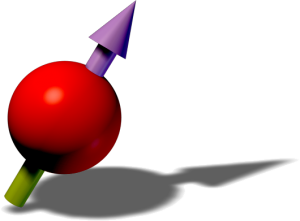by D. Petter, A. Patscheider, G. Natale, M. J. Mark, M. A. Baranov, R. v. Bijnen, S. M. Roccuzzo, A. Recati, B. Blakie, D. Baillie, L. Chomaz, F. Ferlaino
Abstract:
We present an experimental and theoretical study of the high-energy excitation spectra of a dipolar supersolid. Using Bragg spectroscopy, we study the scattering response of the system to a high-energy probe, enabling measurements of the dynamic structure factor. We experimentally observe a continuous reduction of the response when tuning the contact interaction from an ordinary Bose-Einstein condensate to a supersolid state. Yet the observed reduction is faster than the one theoretically predicted by the Bogoliubov-de-Gennes theory. Based on an intuitive semi-analytic model and real-time simulations, we primarily attribute such a discrepancy to the out-of-equilibrium phase dynamics, which although not affecting the system global coherence, reduces its response.
Reference:
Bragg scattering of an ultracold dipolar gas across the phase transition from Bose-Einstein condensate to supersolid in the free-particle regime,
D. Petter, A. Patscheider, G. Natale, M. J. Mark, M. A. Baranov, R. v. Bijnen, S. M. Roccuzzo, A. Recati, B. Blakie, D. Baillie, L. Chomaz, F. Ferlaino,
Phys. Rev. A, 104, L011302, 2021.
D. Petter, A. Patscheider, G. Natale, M. J. Mark, M. A. Baranov, R. v. Bijnen, S. M. Roccuzzo, A. Recati, B. Blakie, D. Baillie, L. Chomaz, F. Ferlaino,
Phys. Rev. A, 104, L011302, 2021.
Bibtex Entry:
@Article{petter2020highenergy,
title={Bragg scattering of an ultracold dipolar gas across the phase transition from Bose-Einstein condensate to supersolid in the free-particle regime},
author={D. Petter and A. Patscheider and G. Natale and M. J. Mark and M. A. Baranov and R. v. Bijnen and S. M. Roccuzzo and A. Recati and B. Blakie and D. Baillie and L. Chomaz and F. Ferlaino},
year={2020},
abstract = {We present an experimental and theoretical study of the high-energy excitation spectra of a dipolar supersolid. Using Bragg spectroscopy, we study the scattering response of the system to a high-energy probe, enabling measurements of the dynamic structure factor. We experimentally observe a continuous reduction of the response when tuning the contact interaction from an ordinary Bose-Einstein condensate to a supersolid state. Yet the observed reduction is faster than the one theoretically predicted by the Bogoliubov-de-Gennes theory. Based on an intuitive semi-analytic model and real-time simulations, we primarily attribute such a discrepancy to the out-of-equilibrium phase dynamics, which although not affecting the system global coherence, reduces its response.},
journal = {Phys. Rev. A},
volume = {104},
issue = {1},
pages = {L011302},
numpages = {6},
year = {2021},
month = {Jul},
publisher = {American Physical Society},
doi = {10.1103/PhysRevA.104.L011302},
url = {https://link.aps.org/doi/10.1103/PhysRevA.104.L011302},
arXiv = {https://arxiv.org/abs/2005.02213},
primaryClass={cond-mat.quant-gas}
}
